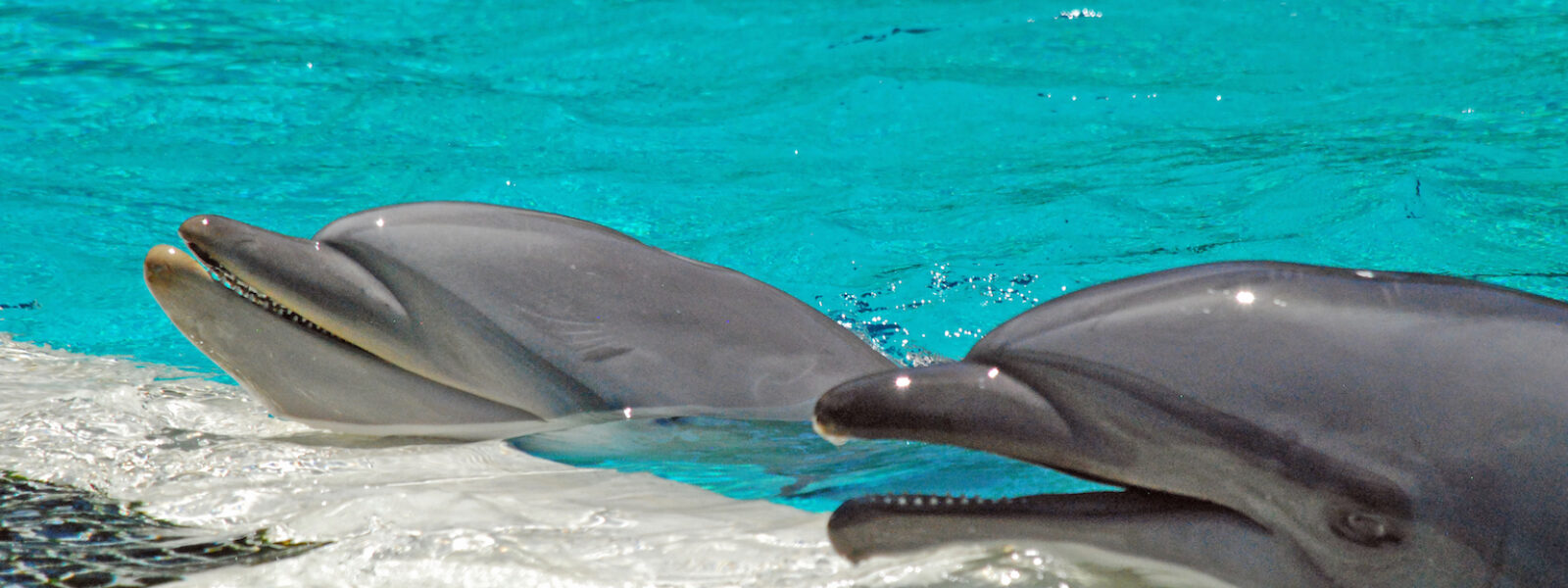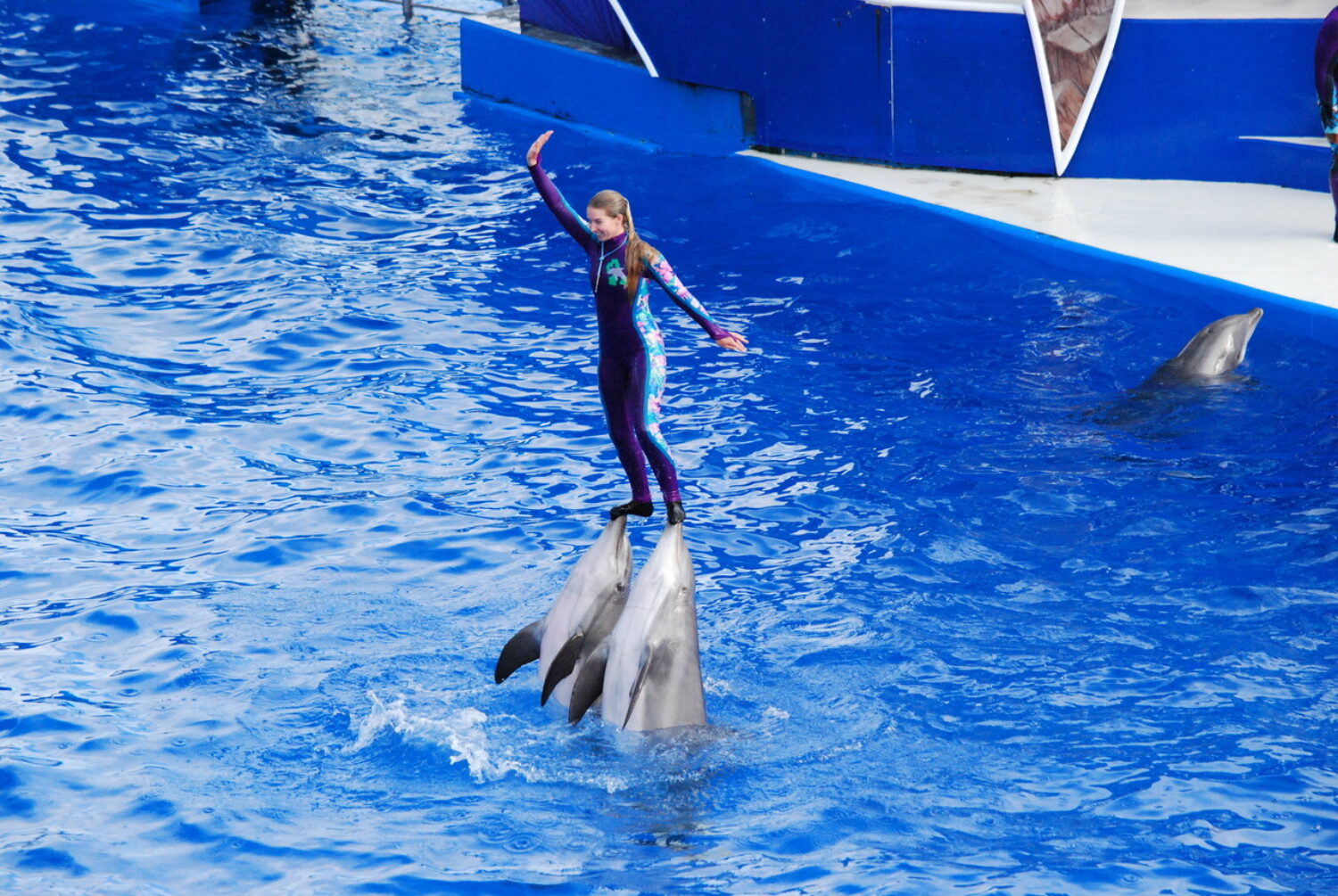
Why It's Time to End Dolphin Captivity Once and For All
By Rosemary Ellis
After being captured in 2009 and held in captivity for several years in South Korea, a female Indo-Pacific bottlenose dolphin named Sampal was released back into the wild. Against all odds, Sampal not only survived but thrived in her natural habitat, proving, once again, that rehabilitation and release are possible for marine mammals who have spent long periods in captivity. Her story is a powerful reminder of the importance of protecting marine life and ending the practice of keeping animals in captivity for our own entertainment and the profits that they bring to the captivity industry.
Sampal's successful reintroduction into the wild was a significant achievement, given the challenges of rehabilitating marine animals who have spent long periods in captivity. Despite concerns about her ability to survive in the wild, Sampal was successfully tracked and seen socializing with a group of wild dolphins. She has even been seen with a calf! Her successful return to the wild demonstrates that dolphins who have been held in captivity for a long period of time can learn to survive in the wild and reintegrate into their natural environments.
The work to free Sampal was part of the successful effort by South Korea’s activist group Hot Pink Dolphins to ensure that dolphins, captured under questionable legal circumstances in the first place, were returned to the wild around Jeju Island. Sampal had been kept in captivity for four years. The International Marine Mammal Project (IMMP) of Earth Island Institute provided support and advice for the rehabilitation and release of Sampal and her tank mates.
Unfortunately, even though the practice of holding orcas in captivity in North America is being phased out, the same is not true for bottlenose and other dolphins. It is estimated that there are currently more than a thousand bottlenose dolphins held in captivity around the world, and breeding as well as captures from the wild are still common practices in some countries. The majority of the dolphins in captivity are held in the United States, Japan, and China.
Dolphins are highly intelligent, social, and sentient animals who require freedom, stimulation, and social interaction to thrive. Yet, captivity deprives them of these essential elements of their natural lives, leading to boredom, stress, depression, and in some cases, aggression. It is time for us to recognize the harm that captivity causes dolphins and advocate for their protection and release to seaside sanctuaries or, when appropriate, the open ocean.
One of the most significant issues with keeping marine mammals, such as bottlenose dolphins, in captivity is the lack of freedom. In the wild, dolphins swim in the vast oceans, with the ability to explore and engage in a wide range of natural behaviors. They live out their entire lives with their family. In captivity, they are confined, with strange dolphins as companions, to small tanks or pools, which provide very little stimulation or opportunity for exploration. Dolphins go silent in captivity, as their usual echo-location sounds are simply reflected back at them by the concrete walls of their tanks. There have been numerous cases of dolphins attacking trainers, tourists who swim with dolphins, and other dolphins in captivity, which is rarely seen in the wild.

Typical dolphin show in which trainers ride on the backs or even stand on the beaks of captive dolphins. SeaWorld, where this photo was taken, has agreed to end the practice of standing on dolphin's sensitive beaks. Photo Credit: Mark J. Palmer/EII
The lack of freedom also impacts their physical health. In the wild, they swim between 20 and 30 miles each day, and sometimes even up to 60 miles. Just like humans, this helps maintain their physical fitness and prevents health issues such as obesity and muscle deterioration. In captivity, however, they are often forced to swim in circles, which can cause severe health issues such as stress, digestive problems, and skin irritation.
Another significant issue with captivity is the impact it has on the social lives of dolphins. In the wild, dolphins form close bonds with other members of their pod and engage in a wide range of social behaviors, such as hunting, playing, and even grieving. In captivity, they are often separated from their families and placed with dolphins from different pods, which can lead to social isolation and depression. It is not uncommon for dolphins in captivity to exhibit behaviors such as floating motionless at the surface or repeatedly banging their heads against the walls of their tanks.
The intelligence and sentience of dolphins make captivity even more abhorrent. They are self-aware and have a sense of identity, which makes it even more difficult for them to adjust to life in captivity.
Finally, the capture of dolphins from the wild is a despicable practice because they are ripped from their families and natural habitats. In some cases, entire pods are captured, which can lead to devastating effects on the ecosystem and the remaining dolphins.
Put simply, bottlenose dolphins and other cetaceans should not be kept in captivity. The lack of freedom, stimulation, and social interaction, as well as the impact on their physical and mental health, make captivity a barbaric and inhumane practice. It is our responsibility to ensure that these intelligent, sentient beings are allowed to live their lives in freedom and with dignity.
Sampal's story is a symbol of hope and a reminder of what we are working towards: ending captivity for dolphins and returning them to the ocean where they belong, when possible, or retiring them to a seaside sanctuary. While there is still a long way to go, the success of this and similar projects around the world gives hope that a better future is possible.
**********************************
